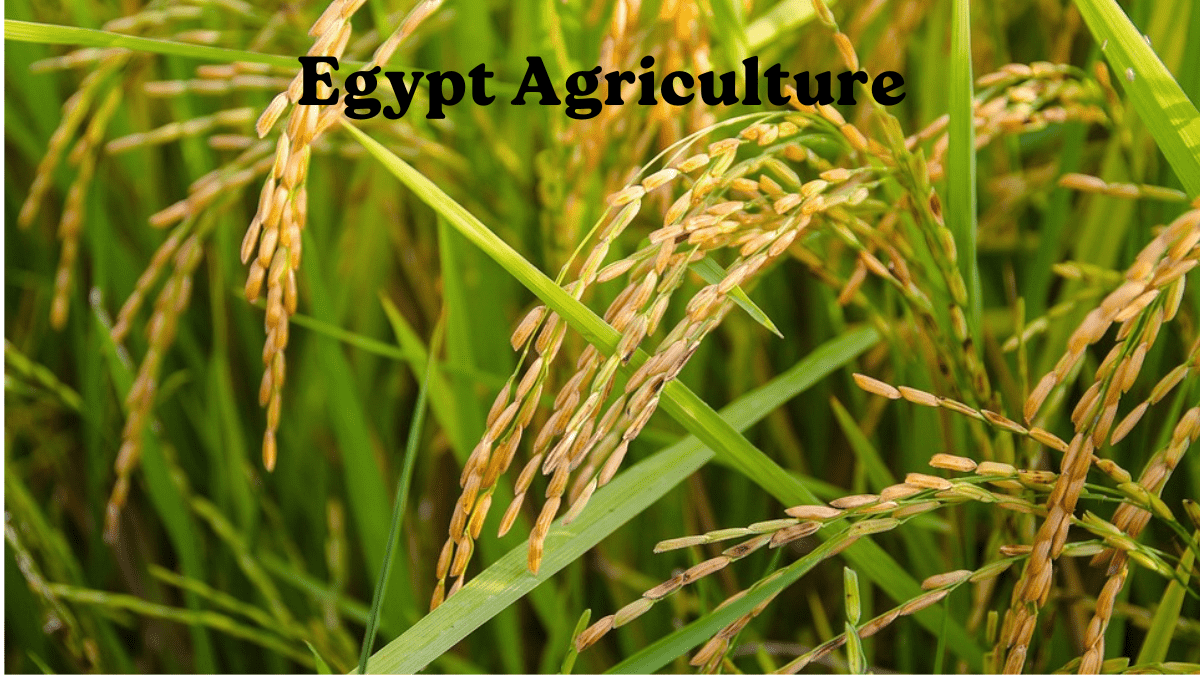
Egypt Agriculture is one of the great fields of the economy that has begun thousands of years. The ancient Egyptian civilization managed the agriculture sector by using the Nile River and planting various crops. Besides nowadays, Egypt is exporting many crops which proves its success in the agriculture sector. In addition, many factors helped Egypt to cultivate its lands. So, we will tell you everything you need to know about Egypt Agriculture.
When did Egyptians start agriculture?
Agriculture began in Egypt first in the Delta region in northern Egypt in the pre-dynastic period, about 6000 years BC, as a result of the need for food.
Ancient Egypt agriculture
Agriculture in Egypt is not of recent origin. As it began in ancient times. And its most important beginning was in the era of the Pharaohs, the era of ancient Egypt.
The Nile river and Egypt agriculture
- There the Nile River contributed to laying the foundations of the ancient Egyptian civilization.
- As a result of the existence of the Nile River, the ancient Egyptian began to cultivate around the banks of the Nile. In addition, the Pharaonic civilization contributed to the development of agriculture by inventing irrigation methods. It would help the ancient Egyptians to irrigate their lands. This was one of the most important reasons that made the Egyptians sanctify the Nile River. Because it contributed to the establishment of agriculture and the rich silt that the Egyptians needed for agriculture.
- In addition, they set different irrigation laws to organize the irrigation. The ancient Egyptian appears in ancient Egyptian inscriptions as he irrigates his lands, sows and harvests. Therefore, agriculture developed dramatically in the Pharaonic era.
- Agriculture also contributed to the Egyptian economy with various crops. The most important of these crops are cotton, beans, lentils, corn, fenugreek, cucumbers, celery, onions, lettuce, and fruits such as figs, grapes, buckthorn, dates, as well as sesame and castor beans.
The farming system in ancient Egypt Agriculture

Agriculture began after the flood water receded from the land and was based on the following steps
- Ploughing the land: We can see this in the ancient Egyptian inscriptions of the farmer ploughing the land with an axe and with animals.
- Sowing seeds: The farmer puts the seeds in the fertile soil and then releases the sheep on them to plant them with their feet.
- Harvesting: The farmer sets a date for harvesting each crop when it is ripe and collecting it in nets or bundles.
- Storage: The farmer registers the crops after extracting the authorization from them and registers that and stores the crops in silos.
Egypt Agriculture in modern Egypt
- Agriculture in Egypt represents the most important sector that contributes to the economy and national income at a rate of 14.7% of the gross national product.
- Beginning with the July Revolution of 1952, attention was paid to agriculture, the development of grazing methods, and the establishment of projects. Therefore, the most important of which is the High Dam project, which contributed to increasing the area of agricultural lands. In addition, the agrarian reform law helped in dividing the agricultural lands from their monopolists and distributing them to the landless peasants.
- Egypt agriculture also contributes to a large workforce of about 8.5 million people. Therefore, it plays a major role in Egypt, especially since the area of Egyptian cultivated land reaches 8.6 million acres. Although Egypt’s total land area reaches 1.002 million km², most of its land is desert, while the percentage of agricultural land does not exceed 3% of its area.
Egypt agriculture products
The main agricultural products are such as corn, rice, wheat, and beans.
Characteristics of Egypt Agriculture
The agricultural sector in Egypt is characterized by several major factors that contributed to the prosperity of agriculture, such as:
1-Characteristic climate
The climate played a major role in providing the opportunity for many important crops to be cultivated in the lands of Egypt.
2-Strategic location
Egypt’s location in northeastern Africa, overlooking the Red Sea and the White Sea, made it able to export its production to Asia, Europe, and of course Africa.
3-Political stability
Political stability helped investment in the field of agriculture and also contributed to the stability of the Egyptian economy and the stability of prices according to international prices.
4-Investment support policies
The government support for investment helped investors in importing and establishing profitable agricultural projects.
5-Availability of farmland
One of the most important factors of production in the agricultural sector is the area of agricultural land, and this is available in Egypt. What we mentioned is that the area of Egypt reaches 1.002 million km². Remedial tools are also available in abundance.
6-Availability of manpower
As a result of the high population density, a large number of trained manpower is available.
7-Availability of water sources
Water sources and various irrigation methods are available, which facilitates the cultivation process and the reclamation of agricultural lands.
In conclusion, Egypt has a great economy that passed on its resources, so Egypt agriculture is one of the pillars that the Egyptian economy depends on it. Besides, ancient Egyptian agriculture has been mentioned and drawn over the ancient Egyptian tombs and temples everywhere. So, Egypt has a great economy and civilization.
FAQs
Many types of crops are planted in Egypt such as cucumbers, onions, garlic, beans, lentils, peas, cabbage, lettuce, dates, melons, figs, pomegranates, and grapes.
There are some plants that grow in Egypt only such as Cyperus papyrus, Eichhornia crassipes, Pistia stratiotes, Ludwigia stolonifera, and Lemna gibba. Zygophyllum simplex, Mesembryanthemum crystallinum, and Cistanche phelypaea.
Yes, Egypt still grows grain while in 2022 wheat production became approximately 9.8 million metric tons.
The ancient Egyptians began farming around the Nile after the annual flood stops as they mainly depended on the Nile River and the silt needed for agriculture.
